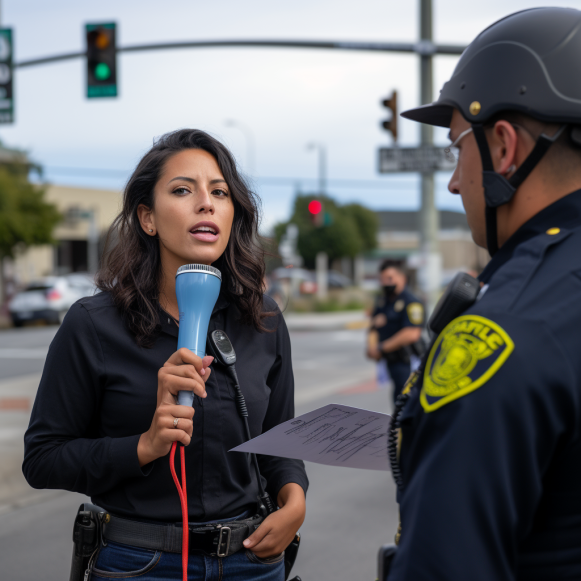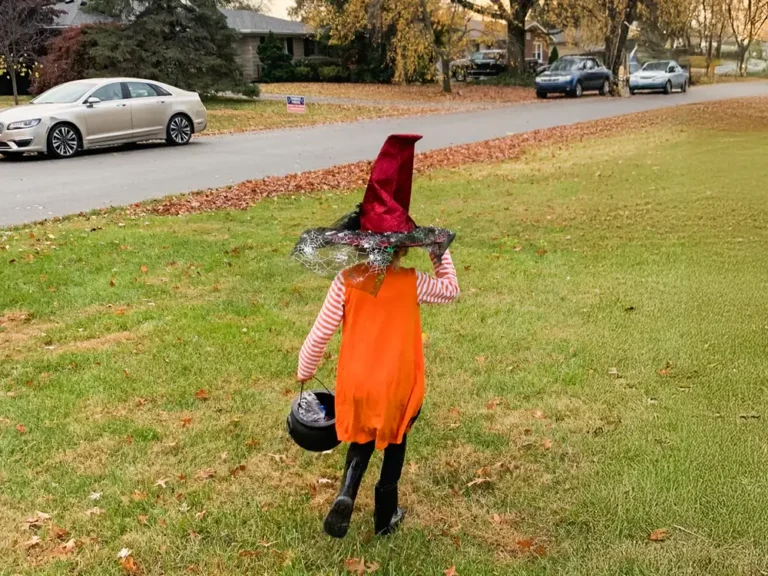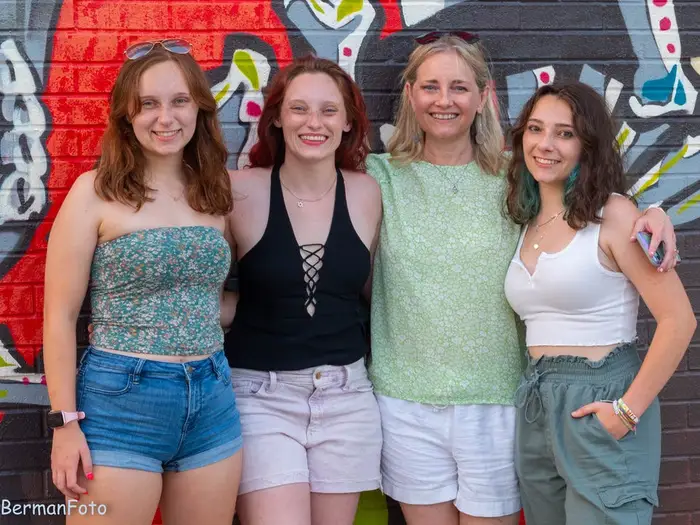Vallejo police releases report mandating return of Sean Monterrosa shooter

Officers give conflicting testimony; captain blasts ex-chief’s ‘political decision’
The Vallejo Police Department’s leadership, including a captain and the commander of the agency’s Professional Standards Division, stand by the officer who killed Sean Monterrosa.
This is according to testimony cited in Arbitrator Alexander Cohn’s report, which was released Thursday by the city of Vallejo and requires Det. Jarrett Tonn to return to the agency with back pay. Lt. Shane Bower testified that Tonn’s decision to shoot Monterrosa, who was unarmed, in the early hours of June 2, 2020, was without flaw. Capt. Bob Knight, likewise, disputed many of the findings of an investigation used by the city to justify firing the detective.
The OIR Group’s 66-page report, according to Knight, was a “catastrophically bad administrative investigation” that “fell short to me on a lot of levels.” And Bower, the VPD’s internal investigations chief, “concluded that (Tonn’s) actions were in line with Department training and policy as it pertains to addressing a threat.”
Cohn also cited an email from then-Chief Shawny Williams to the police force, in which he stated that Tonn “perceived a deadly threat” from Monterrosa and expressed “the most profound appreciation for (Tonn’s) hard work, dedication, and courage.”
According to the Napa-based arbitrator, “this was an admission by the Department that Grievant reasonably perceived a deadly threat and did nothing wrong, despite having shot an unarmed man.”
Overall, the arbitrator described the dispute between Vallejo and the Vallejo Police Officers’ Association as “a close case in which even experts on use of force may reach different conclusions.” However, citing his legal obligation to consider only the facts available to Tonn at the time of the shooting, Cohn concluded that the city erred in terminating the police officer in October 2022.
“Although it is not an easy question, the Arbitrator is constrained to view the situation from the SWAT officers’ points of view at the time,” Cohn wrote. “Using that lens, (Tonn) acted in self-defense of his fellow officers when he shot and killed Monterrosa, whom he believed was about to shoot at them.”
Differing testimony
The Monterrosa shooting occurred during a period of intense civil unrest in Vallejo.
George Floyd had been murdered just days before by a Minneapolis police officer. According to the arbitrator’s report, Vallejo police saw themselves as “under siege,” with crowds of protesters by day and bands of looters by night.
Tonn and the two other SWAT Team members in his vehicle had been assigned the task of protecting the city’s businesses from robbers. When they arrived at the Redwood Street Walgreens, an officer informed them that he had been watching looters enter and exit the pharmacy.
The plan was for the first officer’s police vehicle to approach the looters from one side and Tonn’s vehicle to approach from the other, according to the report.
Tonn’s team entered the parking lot, and people exiting Walgreens began sprinting toward escape vehicles. According to testimony from an officer whose name was redacted, at this point, news came over the radio: “The guy in the black, he’s armed.”
What happened next is debatable.
There is no clear video of the actual shooting. None of the officers’ body cameras were activated at the time, which was against agency policy. According to public records, drone footage of the incident was later overwritten with zeros.
All three officers testified that Monterrosa, 22, was in the process of getting into a black sedan that was driving away when Tonn shot him, but then he abruptly turned around.
According to one officer, Monterrosa dropped to one knee and held up a black object, as if he was about to shoot. Another officer described Monterrosa as taking a “shooting position” with his hands near his waistband, where he was later discovered to be carrying a hammer.
Tonn testified that Monterrosa grabbed the hammer “in the same manner one would grab a firearm, with his hand over the backside.”
The detective, who was sitting in the vehicle’s back seat, gave no verbal warnings before firing an assault rifle five times through the windshield in 1.5 seconds. He hit the unarmed San Francisco man in the back of the head once.
“What did he mean when he pointed at us?” Tonn can be heard asking in a late-night bodycam video.
“I don’t know,” says another officer.
In his report, Cohn stated that lying about an investigation is a fireable offense, and municipalities frequently charge officers with dishonesty when attempting to fire them. Vallejo did not charge any officers with dishonesty in the Monterrosa shooting, so “all sworn officers were considered truthful” in Cohn’s analysis.
Tonn was involved in his fourth officer-involved shooting.
‘A political decision’
When then-Chief Williams informed Capt. Knight that the shooting would be investigated by a consulting firm rather than the police department, Knight’s “jaw just dropped.”
“He told the Chief this was a bad idea because the OIR Group was not there that night and would not have the benefit of what was gleaned,” the arbitrator’s report states.
Williams is said to have cut the captain off, saying, “It was a ‘political decision’ or ‘it’s political.'”
Tonn’s decisions during and immediately before the shooting were criticized in the OIR Group’s report.
It called the SWAT Team’s tactical approach to the Walgreens looting “reckless.” Because Monterrosa was shot in the back of the head, the report stated, “he was turned away from detectives, dissipating any threat when he was fatally struck.” It also supported Tonn’s question, “What did he point at us?” as evidence of his uncertainty about Monterrosa pointing a gun at officers.
To that end, Bower, the department’s rangemaster who also leads the agency’s internal investigations, testified that officers who have just returned from a critical incident often act in unexpected ways. Officers may be unable to form words or coherent sentences as they process what has just occurred. Meanwhile, emotional states vary and include “negative or odd reactions.”
Tonn testified that when he shot Monterrosa, he “100 percent believed (Monterrosa) was an imminent threat and was about to shoot us.”
Bower also testified that even the fastest officers’ response times have a lag. As a result, people are sometimes shot in the back of the head when an officer responds to something that happened a split second before the person turned. Furthermore, the lieutenant stated that he would have made the same tactical decisions if he had received similar orders from the officer present before Tonn’s team arrived.
For his part, Knight stated that he “could not understand” Williams’ decision to fire Tonn and that “analysis of use of force should rely on facts rather than opinion.”
Cohn also received communication from Williams, who resigned in November and, according to the report, “is currently retired.”
Williams stood by the findings of the OIR Group. He claimed Tonn was fired due to policy violations, including the use of “deadly force when it was not objectively reasonable.”
‘Final and binding’
Cohn’s report emphasized Tonn and other officers’ “heightened sense of threat” just before the shooting, a fear fueled by recent vandalism at the police station and “hostility in the community toward the Department.” The threat of armed looters only heightened the sense of danger.
“When Monterossa (sic) acted as if he could deploy a weapon, he was primed to see one,” Cohn wrote. “Because all three SWAT officers also saw Monterrosa either holding a gun or moving his hand toward his waistband area to pull one out, Grievant’s mistaken belief was one that any reasonable officer at such a scene could make.”
Cohn also pointed out that Tonn was not fired by the police department for more than a year and a half after the Monterrosa shooting, instead treating him “as a sworn officer who was justified in using deadly force.”
“These actions are yet another admission that Grievant could be trusted in the use of deadly force, despite his actions on the night in question,” the arbitrator wrote.
Cohn then chastised the police department for failing to convene a Critical Incident Review Board to look into Monterrosa’s case before firing him, a violation of protocol. He also questioned the city’s decision not to call any OIR Group representatives during the arbitration proceedings to respond to witnesses’ concerns about the firm’s initial report.
Cohn’s report is described as “final and binding.”
The word “Monterrosa” is misspelled 26 times as “Monterossa” in the document.
On August 29, City Manager Mike Malone announced that the city will reinstate Tonn in accordance with Cohn’s ruling. Last week, about 120 people packed Vallejo City Hall to protest the decision, delivering two hours of impassioned speeches.
Attorney Lee Merritt, who represents Monterrosa’s family in a civil lawsuit against the city, was among the protestors. Merritt declined to respond immediately to Mayor Robert McConnell’s question about how to keep Tonn from returning to the force.
“I certainly offer myself and my resources, as well as an international group of people who work with cities across the country to come up with a reasonable answer to that question,” he stated at the time. However, despite multiple requests for comment on this article, he did not respond.
If Tonn is reassigned to the VPD’s Patrol Division, Merritt has promised to hire private security to monitor the detective’s movements and notify residents of his presence.
A criminal investigation into the Monterrosa shooting is currently underway by the California Department of Justice. In late August, the agency’s press office stated that the investigation “is ongoing.”
“We owe it to the family and community to ensure that cases involving the loss of human life are handled correctly, with a thorough, fair, and comprehensive investigation,” a spokesperson said. “Beyond that, we cannot comment on an active review.”





